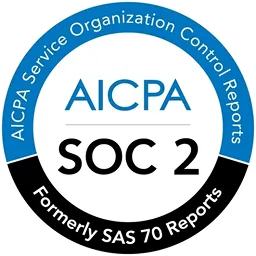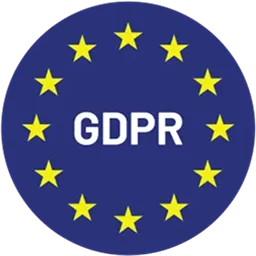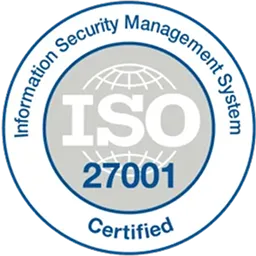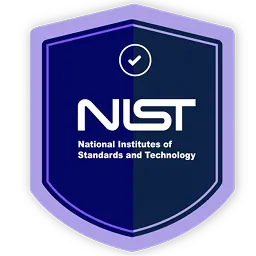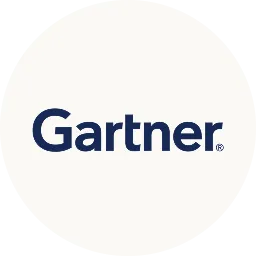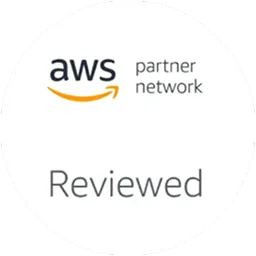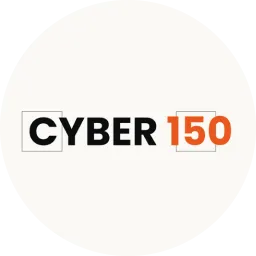Unsure how to tackle the ever-evolving cyber threats? Wondering where to start? Begin by following the NIST Cybersecurity Framework 2.0 guidelines. But what exactly is the NIST CSF, and how can your organization align with it effectively? In this article, we’ll discuss it in detail.
According to Check Point’s 2025 cybersecurity report:
- There’s been a 58% rise in info-stealer attacks (specifically targeting corporate access).
- Ransomware tactics are becoming increasingly sophisticated; instead of encrypting data, attackers are now exfiltrating data and threatening to disclose it unless their demands are met.
- Hardware and software supply chains are becoming the prime targets. This trend introduces risk at the foundational level of an organization’s IT infrastructure.
The recent surge in cyber threats makes one fact clear: traditional cybersecurity approaches no longer suffice to defend against the evolving threats.
With every organization now a potential target, the question is “no longer if, but when”.
‘How can one counter these threats?’ You, as an organisation or agency, can align your cybersecurity strategy with NIST CSF 2.0 – a security framework built for today’s evolving threat environment.
What is NIST CSF 2.0? Let’s find out.
What Is NIST CSF 2.0?
The NIST Cybersecurity Framework 2.0 is the latest version of the widely adopted guidelines developed by the NIST CSF to help you strengthen your organization's cybersecurity posture.
Released on February 26, 2024, this update builds on the original NIST CSF 1.1, expanding its scope beyond critical infrastructure to apply to organizations of all sizes and sectors.
At its core, the framework offers a flexible, risk-based approach, designed to help you:
- Identity and manage cybersecurity risks
- Prioritize investments and controls based on impact
- Align security efforts with business and operational needs
Whether you’re leading cybersecurity for a government agency, enterprise, or mid-sized business, NIST CSF 2.0 provides a common language to assess, improve, and communicate your security program.
Core Structure Of NIST CSF 2.0
At the heart of NIST CSF 2.0 are six core functions, expanded from five in the previous version. These functions provide a high-level view of how to organize and mature your cybersecurity program, from establishing governance objectives to recovering from incidents.
Notably, the new “Govern” function brings a much-needed focus on aligning cybersecurity efforts with business strategy, legal obligations, and compliance needs.
Here’s how each function supports your cybersecurity goals:
These functions aren’t meant to be followed in strict sequence; instead, they help you take a continuous and integrated approach to improving cybersecurity readiness.
Who Should Align With NIST CSF 2.0?
If you’re working with, or plan to work with the U.S. government, aligning with NIST CSF 2.0 isn’t just recommended, it’s increasingly expected.
Here’s who should be paying attention:
.png)
- Federal and Government agencies, such as the FCC, FBI, FTC, SBA, and HHS, are expected to align their cybersecurity programs with the NIST CSF 2.0 guidelines.
- Private sector firms: Whether you’re in healthcare, manufacturing, critical infrastructure, or a cloud-based service provider, the framework provides a flexible structure to strengthen your cyber defenses.
- Academic institutions, such as colleges and universities, that manage research grants, student data, or federal partnerships, can utilize NIST CSF 2.0 to enhance their security posture.
- Contractors, vendors, and supply chain participants: If you’re part of any federal ecosystem or handle sensitive third-party data, alignment with the framework helps establish trust and security assurance.
- Non-profit and civic tech organizations: Even if you’re not federally funded, adopting NIST CSF 2.0 gives you a strong foundation to build risk-aware, resilient operations.
In short, if your organization handles sensitive data, critical services, or public-sector partnerships, aligning with NIST CSF 2.0 helps you meet rising expectations for security maturity.
But beyond compliance, why invest in aligning with it? What do you gain? Let’s break that down next.
Benefits Of Aligning With NIST CSF 2.0
Aligning with NIST CSF 2.0 isn’t just about meeting regulatory expectations; it’s a practical way to improve your cybersecurity strategy, resilience, and stakeholder confidence. Here’s how it helps:
.png)
- Strengthens your Organization’s Security Posture
NIST CSF 2.0 gives you a structured approach to protect data (be it classified data or not) against cyber threats, theft, or misuse. It helps you:
- Identify what needs protection (e.g., critical systems and apps that store sensitive data),
- Implement the right safeguards to prevent unauthorized access or misuse
- Define how to respond to cybersecurity incidents quickly and effectively
- Establish when and how to review past incidents to improve future readiness
- Builds a Smarter Cybersecurity Risk Management Strategy
This framework helps you understand the risks your organization is likely to face and what could go wrong if you get hit by a cybersecurity incident (risk tolerance).
With this clarity, you can:
- Prioritize the most pressing threats
- Allocate resources more effectively
- Make informed decisions about where to strengthen controls and how to budget for cybersecurity
- Simplifies Regulatory Compliance
Many U.S.-based regulations, such as HIPAA, FISMA, and CMMC, mandate organizations to align with NIST CSF guidelines. Following this framework helps you:
- Map your controls to regulatory requirements
- Demonstrate due diligence during audits
- Avoid fines and penalties tied to non-compliance
- Establishes Credibility & Trust
When you follow a widely recognized framework like NIST CSF 2.0, it sends a clear message to clients, partners, and stakeholders:
You take cybersecurity seriously and have a proactive approach to protecting data and systems.
So, how do you align with NIST CSF 2 o? That’s where a tool like Zluri comes in.
Let’s look at how Zluri supports practical implementation, starting with visibility, control, and automation.
How Zluri Helps You Align With NIST CSF 2.0?
To align with NIST CSF 2.0, you need to follow the guidelines outlined in the framework (as mentioned in the core structure table).
This involves performing the necessary activities under each NIST CSF 2.0 function —Govern, Identify, Protect, Detect, Respond, and Recover —with thoroughness and consistency.
This is exactly where Zluri comes in. It helps you perform these activities efficiently, accurately, and with confidence. How does it do that? Here’s how.
.png)
- Identifies All The Applications & Categorizes Them
Zluri uses its patented discovery engine (that directly integrates with HRMS, IdPs, MDMs, and more) to uncover all the apps that are being used within the organization – including the ones that are:
- Not approved (i.e., shadow IT)
- Not connected or managed through your organization’s central identity system (i.e., unfederated apps)
- AI apps like ChatGPT, DeepSeek, Claude, and more
It then automatically organizes and classifies them into over 50 major categories and more than 2,300 detailed subcategories.
How is this going to help?
Your team can use this visibility/insights to understand:
- Which apps are being used and for what purpose?
- Where they are located,
- What type of data do they hold (critical or non-critical data)?
Accordingly, they can determine which apps require additional protection or should be prioritized in their cybersecurity strategy.
- Allows Your Team To Apply Access Control To Restrict Access To Critical Applications
Once decided which apps need to be protected, use Zluri’s automation rule engine to define conditions to control who gets access to those apps.
Suppose, if you want to ensure that only the finance department’s admins can access a sensitive financial application, you can specify the following details in the automation rule workflow:
Once the conditions are met, Zluri will automatically grant the finance department's admins access to critical financial apps.
How does this help?
By restricting access strictly to authorized users, Zluri significantly reduces the risk of data misuse and unauthorized exposure.
- Run Access Reviews To Detect Access Anomalies
Next, your team needs to review whether the applied access controls are performing as expected or not (they need to check if the right users are getting the right app access).
For that, your team can leverage Zluri’s access review solution. All your team needs to do is specify the applications that require review.
- Zluri will automatically list the users who currently have access to those apps, along with key attributes such as their department, activity status (active/inactive), role, and more.
- With these insights, your team can easily verify whether access has been granted only to authorized users.
If multiple anomalies are detected – such as inactive users having access to critical apps – then this indicates that the access controls were misconfigured or require improvement. You can make necessary changes accordingly and fix the controls.
To fix the detected access anomalies, trigger Zluri’s deprovisioning or downgrade license playbook.
How is this going to help?
By detecting access anomalies during review and promptly remediating them, you can significantly reduce the attack surface and satisfy NIST CSF detect and respond function guidelines.
But wait – you are not done yet!
Once you have leveraged the Zluri solution and implemented other cybersecurity policies and procedures (such as a policy to encrypt data in transit and provide cybersecurity training to your staff), you can proceed.
You need to check – Where do you stand on the NIST CSF 2.0 maturity scale? How to check that? Here’s how.
How to Measure Cybersecurity Maturity with NIST Implementation Tiers?
You can use NIST Implementation Tiers – a scale to evaluate where your organization stands in terms of cybersecurity risk management maturity. For example:
Staying Aligned With NIST Is No Longer A Choice – It’s A Necessity
With a surge in cyberattacks and regulations becoming stricter, organizations can’t afford to ignore NIST.
It isn’t just another framework – it is your rulebook for establishing a secure and compliant IT environment. By aligning with NIST 2.0, you reduce the risk of encountering cyber threats and stay ahead of regulatory penalties.
It’s the smart way to stay protected and prepared.


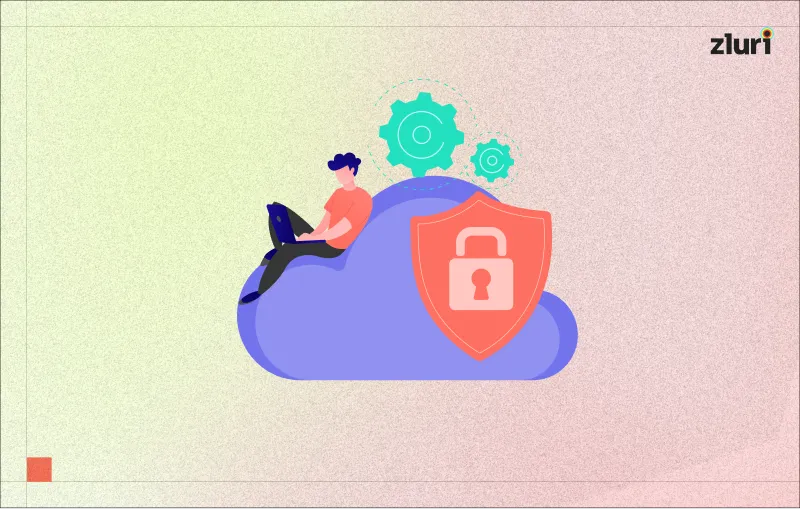



.png)


.svg)



